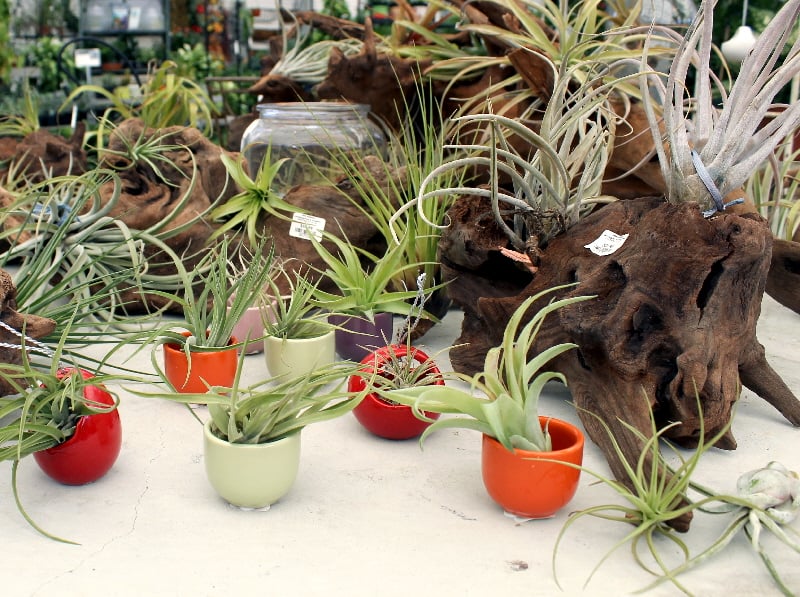Tillandsias (Air Plants)
Easy care, exotic looks and the ability to be used anywhere from elegant centerpieces to whimsical craft applications, air plants are versatile houseplants.
Unlike most plants, air plants absorb water and nutrients from their leaves through the silvery scales (called trichomes) that cover the leaves. Their roots are only to keep them attached to trees or other growing supports. This characteristic makes them easy to display almost anywhere in any way.
They can be glued (using Liquid Nails, hot glue, Goop, Tilly Tacker or E6000) to almost anything. Use soft wire to support the air plant in position until glue dries. Other display methods are suspending with fishing line or simply setting in a pretty container (no soil!)
After blooming, air plants produce offset plants called “pups”. These can be detached once about half the size of the “mother” to make new plants, or they can be left to form a large clump.
Light:
Air plants need bright light, but avoid harsh direct sun. They respond slowly to changes in light, so you can keep several air plants in a bright location and rotate them into a more dimly lit display area for a few weeks at a time with no harm. The silvery-colored air plants are more tolerant of higher light levers, green-leafed air plants need a bit more shade.
“Fun fact-Spanish moss is an air plant, and air plants are related to pineapples.”
Try letting your air plants live outdoors in bright shade in summer-they respond well to summer heat and love humidity.
Water:
Dunk for 15 minutes or mist heavily (to water runoff) once or twice a week. If the leaves curl or roll you’re not watering enough. If leaves roll, water by dunking to rehydrate fully.
Fertilizer:
Not completely necessary as they absorb some nutrients from the air, but dunking in ¼ strength fertilizer once a month will improve vigor and increase growth. The trichomes readily store fertilizer and for that reason it can be easy to over-fertilize so don’t fertilize more frequently.

